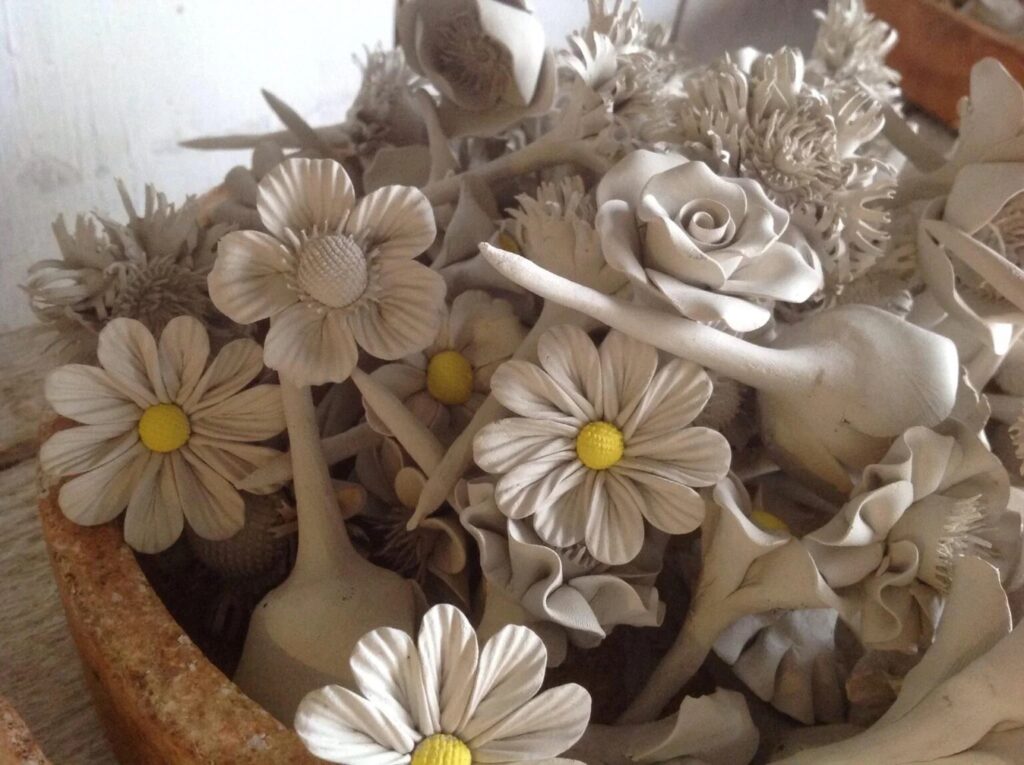
To make a bone china rose you don’t need any tools except oil to dip your hands into to stop the bone china sticking to your fingers. You can see my video of how to make a bone china rose here or further down the page.
To make most of the other flowers, basic tools are used. The comb is used to create spiky effects. The sieve is used to make the center of flowers. The mold with lines on creates a line impression on the petals. The leaf mold obviously creates leaves, and the other tools are used for different techniques. The grey metal card (an old credit card would do) is used to cut the clay when needed.
Below are the tools we use at Coalport China Museum.

Videos of me making bone china flowers
Below these videos are links to pages with step by step instructions.
How to Make a Bone China Clay Rose
How to make an Anemone from Bone China Clay
How to Make a Daisy Flower with Bone China Clay
The Story of Flower Making
Factories in England using hand-made flowers in their designs included Chelsea, Bow Derby and Minton. The name “Coalbrookdale” is used as a general term for flower encrusted ware, after the famously intricate pieces produced here at Coalport.
Handmade porcelain flowers were produced at Meissen in Germany from the early eighteenth century. In 1748 individual flowers accounted for five sixes of the production at the Serves Factory. Flowers were either mounted on wire stems or applied directly to the surface of vases. In the 1750’s the Vincennes factory employed 46 girls making porcelain flowers to be mounted on wire stems with metal leaves.
Madame de Pompadour even had a porcelain flower garden made for wintertime.
Bone china flowers are a well known form of decoration on Coalport China. They were used to decorate a range of Coalport china called Coalbrookdale Ware.
The flowers were made completely by hand from bone china clay.
At the Coalport China Works, this skilled task was usually performed by women. They could each make a china rose in about thirty seconds.
The flower makers required only simple tools.
They would use a comb made from leather, wood or bone to make indentations in the clay and a scalpel for cutting.
The most skilled flower makers had a comb made of bone as a sign of their higher status.
Flower makers today use every day objects such as tea strainers as tools. They rub cooking oil into their hands to prevent the clay sticking.
Bone china clay used to ‘go off’ very quickly and was extremely smelly.
Modern bone china clay contains special chemicals to prevent it ‘going off’ so quickly.
